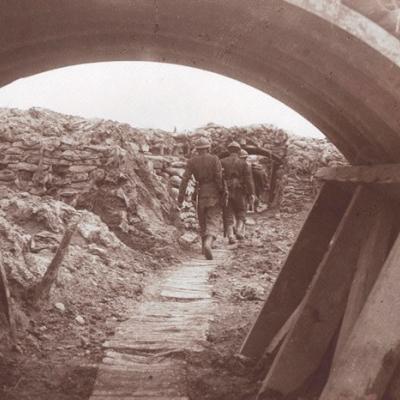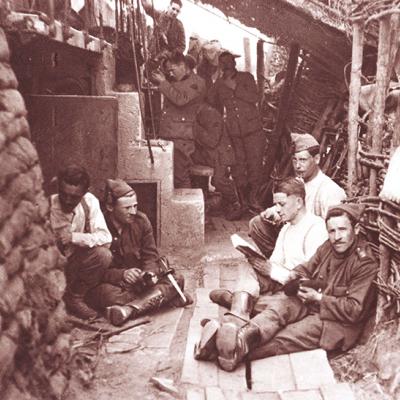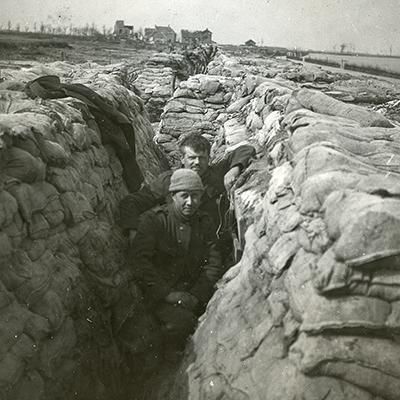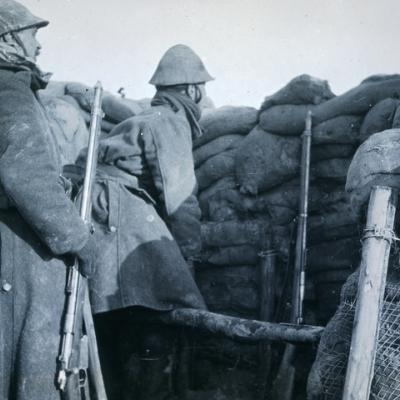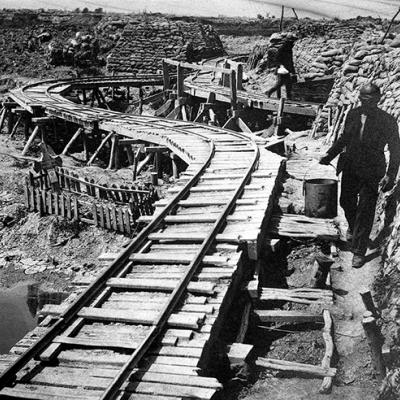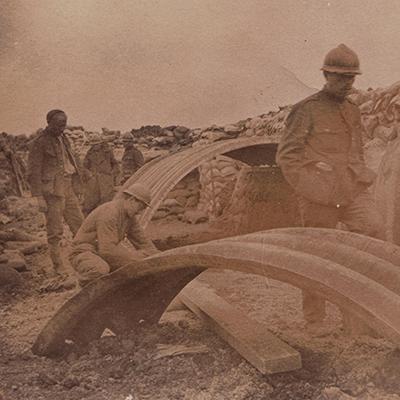Trenches
Having arrived at the Yser, the Belgian army began to dig holes. These were connected to each other and became the first trenches.
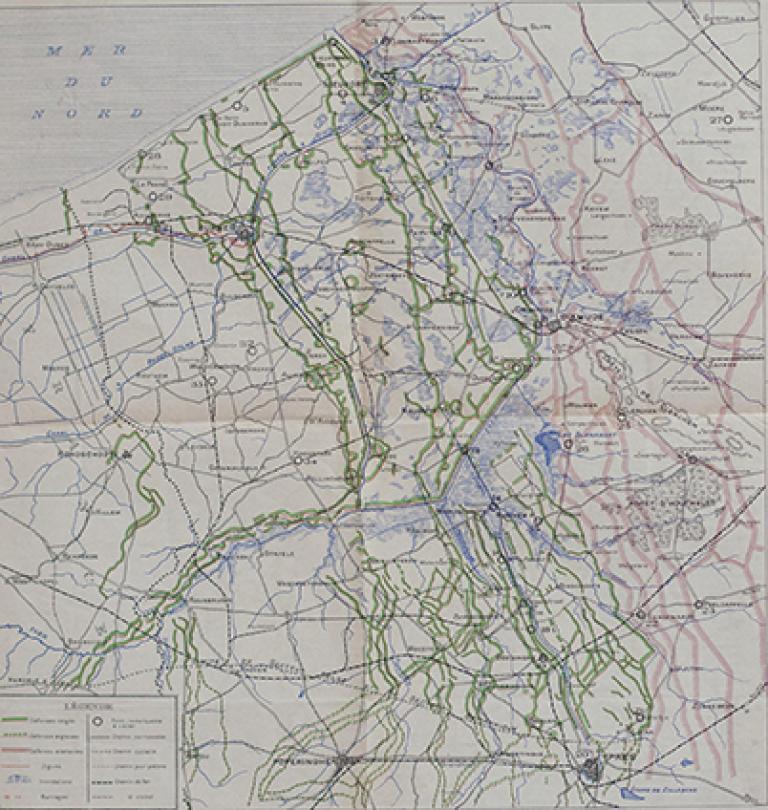
The trenches at the front of the Yser were usually built aboveground because the water level made digging impossible. Sectors were fortified with successive lines of resistance. Behind the main line of resistance there was a second line with the same length. If necessary and when time permitted, other lines of resistance were added.
Outposts and listening posts were set up in front of the main line of resistance in order to watch the enemy. The trenches, which became the symbol of the stalemate at the front of World War One, were systematically improved and extended. Hundreds of thousands of sandbags (called ‘vaderlandertjes’) and endless rows of barbed wire were needed to achieve these field works. Several bunkers and shelters were also built, some of them in reinforced concrete.


